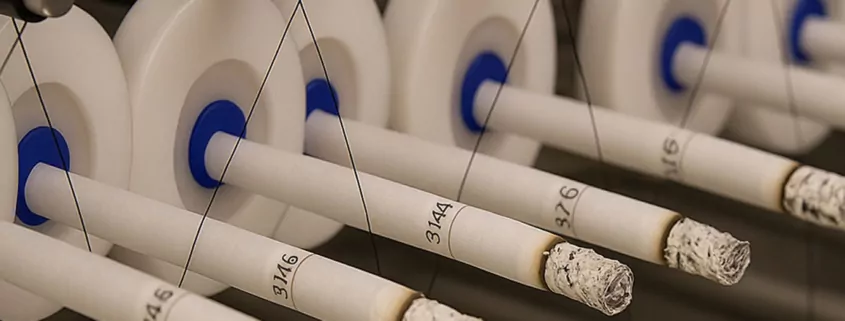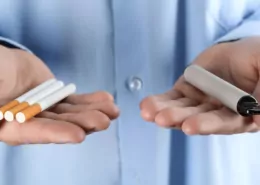Vapes and HTPs Cut Toxin Exposure by Over 90%, Study Finds
A major new peer-reviewed study has found that e-cigarettes (vapes) and heated tobacco products (HTPs) can reduce a user’s exposure to harmful and potentially harmful chemicals by more than 90% compared to traditional combustible cigarettes. The research, published in the International Journal of Environmental Research and Public Health, provides a comprehensive analysis of empirical data from 15 independent studies, reinforcing the role these smoke-free products can play in tobacco harm reduction for adult smokers.
The large-scale review is among the most thorough to date, distinguished by its methodology: it included only studies that used validated testing methods and, crucially, excluded any research with direct ties to the tobacco industry to ensure impartiality. The findings offer a clear, data-driven perspective on the significant reduction in toxicant exposure when switching from smoking to vaping or HTPs.
The Science of Harm: Combustion vs. Heating and Vaping
The fundamental danger of traditional cigarettes lies in the process of combustion. When tobacco is burned at temperatures exceeding 500°C, it releases a complex and deadly cocktail of more than 7,000 chemicals. Around 100 of these are classified by public health authorities as harmful or potentially harmful constituents (HPHCs). These include well-known carcinogens like polycyclic aromatic hydrocarbons (PAHs) and tobacco-specific nitrosamines (TSNAs), as well as volatile organic compounds (VOCs), carbonyls (like formaldehyde), and carbon monoxide. “Combustion-based products are the ones most harmful to smokers,” the study unequivocally states.
In contrast, alternative nicotine products operate on different principles to avoid this harmful combustion:
- Heated Tobacco Products (HTPs): Devices like IQOS and Glo heat specially designed tobacco sticks to lower temperatures (typically below 400°C). This process generates a nicotine-containing aerosol but avoids burning, which significantly reduces the formation of toxic substances.
- E-Cigarettes (Vapes): These devices work by heating and vaporizing an e-liquid, which typically contains nicotine, propylene glycol, vegetable glycerin, and flavorings. This process does not involve tobacco leaf at all, further distancing it from the chemical profile of cigarette smoke.
What the Data Shows: A Dramatic Reduction in Harmful Chemicals
To accurately compare the emissions from these different products, the researchers standardized the chemical data from the 15 independent studies, converting all measurements to a per-puff basis. The analysis revealed dramatic reductions in key toxicants for both HTPs and vapes when compared to combustible cigarettes:
| Harmful Chemical Category | Reduction in HTPs (vs. Cigarettes) | Reduction in Vapes (vs. Cigarettes) |
|---|---|---|
| Polycyclic Aromatic Hydrocarbons (PAHs) – Potent carcinogens | Reduced by 96% | Reduced by 99% |
| Volatile Organic Compounds (VOCs) | Reduced by 99% | Reduced by 100% (Effectively eliminated) |
| Carbonyls (e.g., formaldehyde, acetaldehyde) | Reduced by 65% – 95% | Nearly eliminated |
| Tobacco-Specific Nitrosamines (TSNAs) | Reduced by 89% – 94% | Reduced by 99% |
| Carbon Monoxide | Reduced by 98% | Reduced by 99% |
In many of the analyzed cases, the levels of these harmful chemicals in HTP and vape emissions were so low that they fell below the detectable limits of the scientific instruments used, suggesting a near-total elimination of some of the most dangerous toxicants found in cigarette smoke. The review also found that levels of toxic metals such as lead and cadmium – often a point of concern with heated or vaporized products – were significantly lower in both vapes and HTPs compared to traditional cigarettes.
A Less Harmful Alternative for Adult Smokers
The study’s authors are careful to stress that while vapes and HTPs are demonstrably less harmful than smoking, they are not risk-free. The ideal health outcome is to quit all nicotine and tobacco use entirely, and these products are not advocated for non-smokers or youth. However, the findings strongly support the role of these alternative products in tobacco harm reduction strategies.
For the millions of adult smokers worldwide who are unable or unwilling to quit nicotine altogether, switching completely to a regulated smoke-free product could substantially reduce their health risks. The study concludes, “Such a significant reduction in HPHCs results in a reduced exposure to toxic substances, which in turn leads to fewer adverse health effects for smokers.”
The paper reinforces the core principle of harm reduction: because both HTPs and vapes avoid combustion, they inherently produce far fewer toxic substances than conventional cigarettes. The combination of significantly lower levels of known carcinogens, reduced respiratory irritants, and sharply diminished carbon monoxide exposure supports their classification as “less harmful alternatives.” This review adds to a growing body of independent scientific evidence that switching completely from smoking to regulated smoke-free products can dramatically reduce a smoker’s exposure to the chemicals most closely linked to cancer, heart disease, and other devastating tobacco-related illnesses. This is particularly relevant for countries where smoking rates remain high and access to traditional cessation services may be limited.
- India Researchers Call for Re-evaluation of Vape Ban - August 9, 2025
- Malaysian Health Minister: Vape Ban is No Longer an ‘If’ - August 9, 2025
- Is It Illegal to Vape or Smoke While Driving in Indiana? - August 9, 2025









